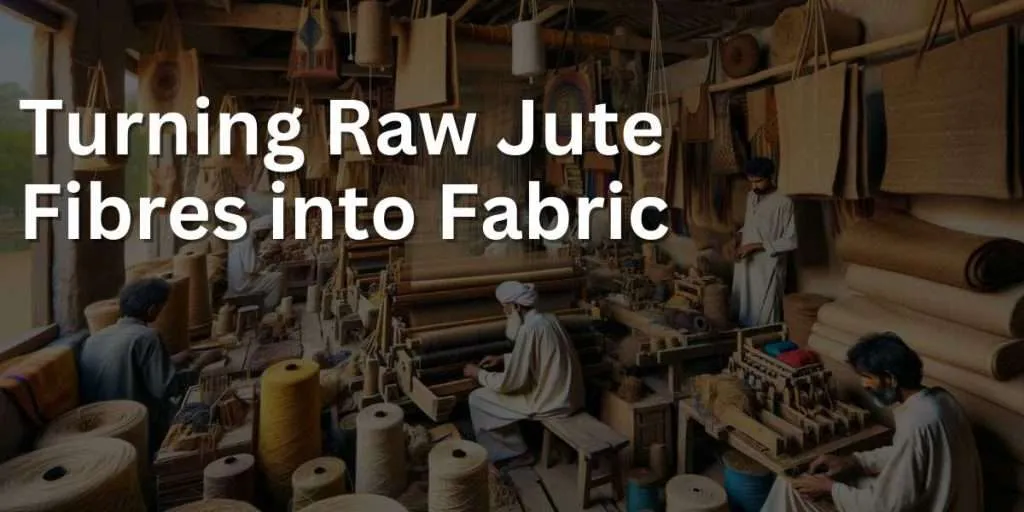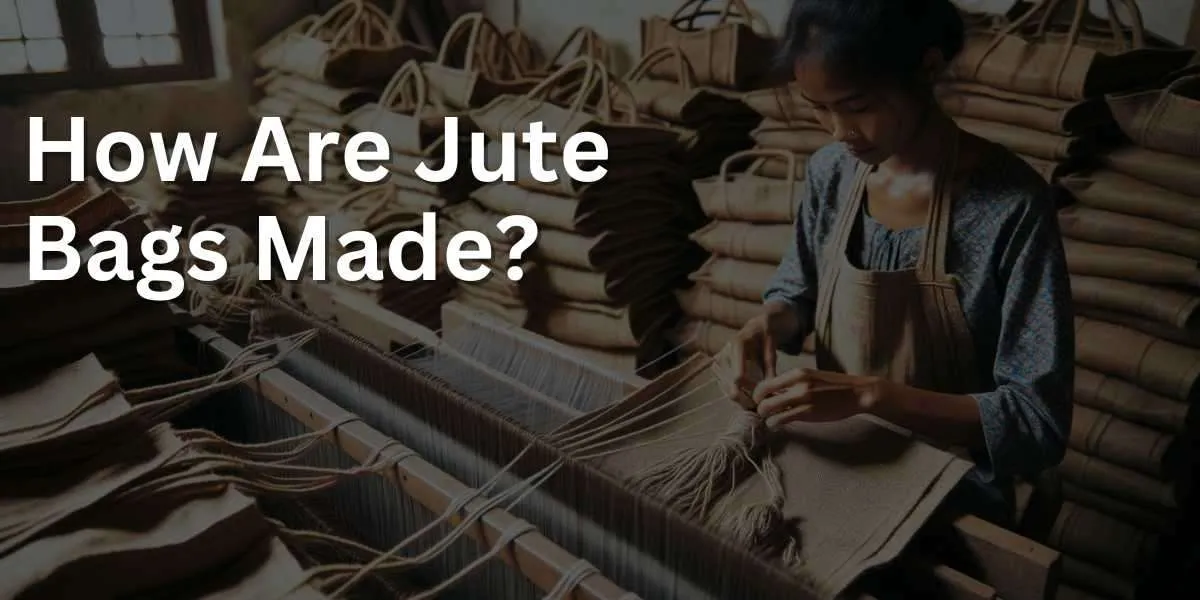How are jute bags made? Traverse the path from raw fiber to your sustainable tote.
Jute bags, celebrated for their earthy aesthetic and environmental benefits, have origins deeply rooted in traditional craftsmanship. But how does this golden fiber transform into a functional bag?
If you’ve held your jute tote, admiring its texture and design, and wondered about its creation process, you’re about to unveil a tale of artistry and nature.
Engage with me in this revealing narrative, and together, let’s appreciate the craftsmanship that molds jute into the bags we cherish.
How do they make jute bags?
Jute bags are crafted from the fibers of the jute plant, a renewable and sustainable resource predominantly grown in regions of India, Bangladesh, and China. The process of making jute bags begins with harvesting the jute plant, typically between 120 to 150 days after planting. Once harvested, the stalks undergo a process called retting, where they are soaked in water for several days to separate the fibrous parts from the wooden core. This soaking softens the stalks and allows the individual jute fibers to be extracted.
After retting, the fibers are stripped from the stalks, washed, and then dried under the sun. These raw fibers are then sorted, graded, and sent to mills where they are spun into coarse, strong threads. The jute threads are woven into fabric using traditional looms, resulting in the characteristic textured, breathable, and durable material.
This woven jute fabric is then cut, stitched, and sometimes laminated to craft the final jute bags. Depending on the intended use and design, the bags might be dyed, printed with designs, or fitted with accessories like zippers or handles. The entire process, from plant to product, underscores jute’s eco-friendly nature and its versatility as a material.
Jute bags are made from jute fibres which start life as a plant so the process of making a reusable jute bag starts in the field.
Growing and Harvesting Jute
Jute requires a humid climate and high rainfall so it is mostly grown in India and Bangladesh. The bags we sell are made and hand-dyed in Kolkata, India by an ethical company and hold the fair trade mark.
In the field jute grows quickly and requires very little, if any, chemical intervention in terms of pesticides and fertilizers. In fact, jute can be harvested every 4 to 6 months and actually puts nutrients into the soil, enriching it for future crops, making it an ideal crop for crop rotation.
As well as being good for the soil and quick to grow the yield, in terms of the amount of fibre that can be harvested by hectare, is greater than cotton, meaning less land is required leaving more space for growing food or other uses.
Once grown the long jute stems are harvested, often by hand. Harvesting happens once the flowers have dropped and stalks are often left in the fields for a few days for the leaves to come off and then bundled up ready for the next stage in the process, retting.
Retting and Extracting the Jute Fibres
The next stage in the process is retting. Bundles of jute stalks are soaked in slow running water to dissolve and rot away the tough cellular tissue surrounding the long golden fibres wanted to make bags (or anything else).
This natural process is safe both for the workers and the environment as no harsh chemicals are needed.
Once the retting process has done its work the fibres can be extracted by hand, a process is known as stripping. Stripped fibres are then beaten to separate them and the long golden fibres are then hung to dry ready for the carding process.

Turning Raw Jute Fibres into Fabric
Once the fibres have been extracted from the stalks the real bag making process begins. Jute fibres are carded ready for spinning into thread and weaving into fabric. Carding is a mechanical process in which fibres are converted into long continuous ribbons of fibre ready to be spun.
Once the fabric has been woven it can then be cut, dyed or screen printed and sewn into bags or other jute products like baskets, soap bags
The fabric woven for jute shopping bags is generally fairly coarse but finer jute fibres can be extracted and woven into imitation silk. Jute can also be mixed with other fibres to create strong rope or fabrics with different properties.
FAQS on how jute bags are made
What is the primary material used in the production of jute bags?
The primary material used in the production of jute bags is jute fiber, which is a natural and biodegradable material derived from the jute plant.
How is the jute fiber processed to create the fabric for bags?
The jute fiber is first harvested from the jute plant, then it’s retted in water to separate the fibers. After drying and carding, the fibers are spun into yarn, which is then woven into fabric suitable for making bags.
Are there any environmental benefits of using jute bags compared to plastic bags?
Yes, jute bags are eco-friendly as they are made from a renewable resource, biodegradable, and can be reused multiple times. In contrast, plastic bags contribute to environmental pollution and can take hundreds of years to decompose.





